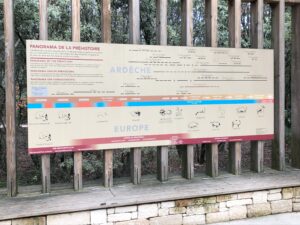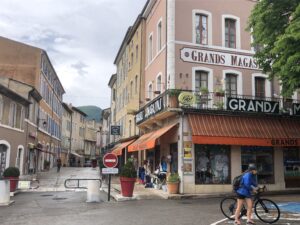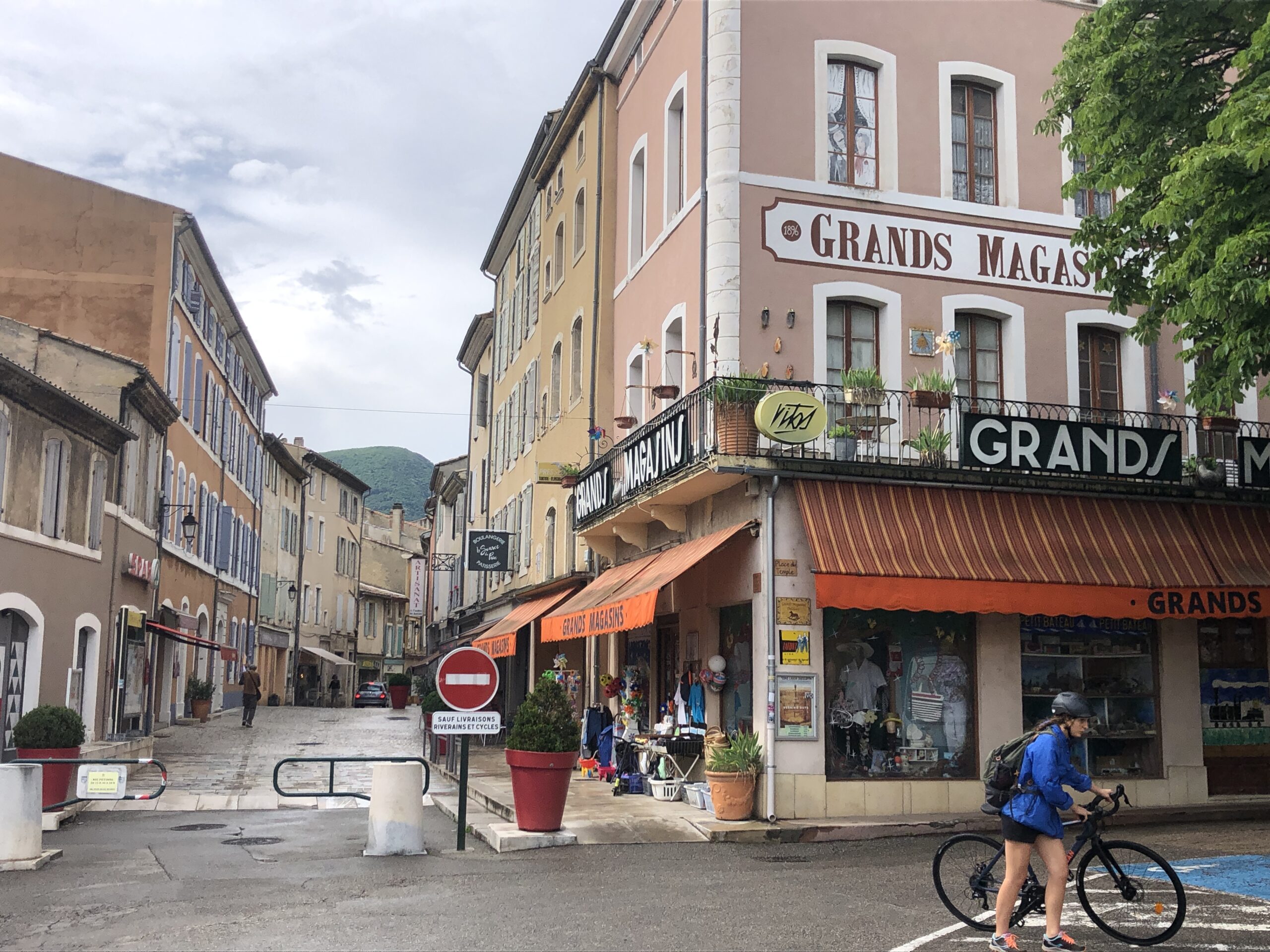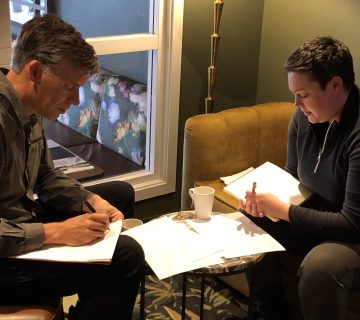It’s tough for people to consider the past, present and future when attitudes to change are so tied to emotions. Let’s explore some thoughts.
How would you feel if a long-established, family-run shop in your high street closed for the last time or if an old town-centre school forming the backdrop to your childhood was replaced with a modern building on the outskirts?
For many individuals, losing such ‘pillars’ of their own personal heritage can be deeply unsettling, sometimes reflecting a broader unease with change and a desire for stability. “It’s aye been the same” (it’s always been that way so no need to change) is an expression I heard often when I worked in rural development in South West Scotland, UK. In reality, people and places form fleeting physical landmarks of our lives, yet both linger long in our minds.
Heritage is commonly associated with times gone by and preserving the past. It’s an established way of thinking that can also provide reassurance and a sense of origin, especially in an increasingly unstable and uncertain world. So, how can we, as interpreters, overcome the whiff of nostalgia and a tendency to cling to the past to really help people to engage with the process of time and change, to reflect on the past, consider the present and even envisage the future?
One way to start is to encourage people to consider that we live in an historic environment, i.e., “the material and natural world around us, as shaped by people’s activities through time and perceived by people now” (Mus. London Archaeology). Our historic environment features tangible and intangible phenomena connected to sociocultural values (symbolism, aesthetics, historical). As soon as the ice sheets retreated, people moved in and settled or roamed and in doing so, left their mark. We’re still doing it today albeit on a potentially greater transformative scale with all the modern means and technology available to us.
Change is an inherent part of the historic environment, in the sense that ‘life goes on’, so this allows people to view a site or place in the process of transition (to different degrees). Interestingly, Historic England publishes a similar definition on their website to that given above, emphasising the “interaction between people and places through time”. By contrast, Historic Environment Scotland refers to the past, as “physical evidence of past human activity… that connects people with place, and with traditions, stories and memories linked to those places” (HES website), so even different authorities within the same country have different interpretations.
Taking a concrete example of an historic environment, ‘Plotland’ retreats, or refuges, such as that at Dungeness on the south coast of England, UK, were a reaction to intense industrialisation and a desire for renewed contact with nature. Influenced by the arts and crafts and garden city movements after WWI, they are typically unique, simple, self-built wooden off-grid chalets set in the countryside or coastlines. Nowadays, they appeal to those wanting a change of lifestyle and are at risk of creeping gentrification to suit modern needs. While the nature around them often has protected status the buildings do not. Plotland campaigners are dealing with a delicate balancing act. People need well-equipped, comfortable homes but at the same time they see the importance of protection to retain the unique atmosphere together with the underlying values and awareness of social history of the place. So, is it still a plotland retreat if your wooden chalet has central heating and solar panels?
Next, we might consider cultural differences. At the risk of being deliberately provocative in an interpretive sense, France is an ‘old’ country and fosters a fairly conservative attitude to heritage. My personal experience largely bears this out. Perhaps Greece is similar, whereas ‘new’ European countries may adopt a more liberal stance. Gross generalisations, I admit, but when heritage is managed by a hierarchy of established institutions and policies, the challenge of change is big yet should still be confronted. Exhibitions often show how a site has changed to the present day although fewer extend into the future. Evoking cultural attitudes to change is one way of encouraging people to reflect on their own position and underlying values through heritage experiences, although clearly sparking a heated argument in a visitor centre is not the best way to go about it. The interpreter’s dexterity and sensitivity is vital to formulating the appropriate open questions to initiate this internal debate, ideally when reflecting after visiting a site.
Let’s change tack. Just how familiar are you with the past? Many might answer positively but another approach to reflecting on the past and change is the concept of palimpsests. According to the dictionary, palimpsest means something reused or altered, still bearing traces of its earlier form. Most old buildings, from humble homes to the Palace of Versailles, are palimpsests. They reflect changing practices, values and ways of life. Intangible heritage, such as local dialects, recipes or knitting patterns, has often experienced layers of change too. Language, for instance, constantly evolves. New words are added each year and dictionaries are updated to include them. We might not like recently introduced words such as ‘deepfake’, ‘metaverse’, or ‘anti-vaxxer’ yet these are natural processes that reflect social shifts in human cultural evolution. Indeed, many people can appreciate that if a language stops evolving its days are numbered. So, using the strange technical yet oddly memorable term of palimpsest might help broaden perspectives on the heritage we perceive.
There are also many sayings and stories we can draw on. For instance, a Greek proverb states that a society grows great when old men plant trees in whose shade they shall never sit. Yet attitudes to change are often tied to how long we live or are in power (certainly that applies to politicians’ promises!). We are on the Earth for a fleeting moment while, natural and human catastrophes aside, our environment, particularly the countryside, generally changes at a much slower pace. When we consider our ancestors, ourselves and our future descendants, is keeping things as they are (the aforementioned “it’s aye been” saying) a selfish position? Are we not rather guardians of change than defenders of it?
On the subject of setting something in stone or stopping time, Canute (or Cnut), King of England in the 11th century, is popularly associated with trying to use his royal powers to stop the tide from his throne on the seashore. He fails of course and the water laps around his feet. Actually, it is believed that his exercise was to demonstrate that only a higher (religious) power could command the elements and all human authority was futile. He was wrong on both counts but as Mark Twain said, “never let facts get in the way of a good story”. Twain would have made a great interpreter!
More seriously, we can consider that people are knowingly or unknowingly agents of change. Plant hunters often risked their lives to bring back exotic trees and shrubs that escaped greenhouses and landscape gardens to smother Scottish heather hillsides in bright rhododendrons from the Himalayas or prickly pears cacti originally from Mexico that are now an iconic feature of the Mediterranean coast. These are technically invasive species but should we intervene to eradicate them from these landscapes?
Agricultural landscapes might seem a constant in our lives but they have also experienced much change over time. Some change year to year. Last year it was maize, this year it’s oilseed rape. In my part of rural South East France, lavender fields line the landscape. They seem timeless yet everything is in movement here, including the related land management knowledge and traditions. Before, every square metre was used to grow cereals to provide food while only the small stone cabins in the middle of the fields seem to have miraculously survived the centuries. What did our ancestors see at this precise spot and what will our grandchildren see? Local lavender producers are attempting to secure UNESCO status for “olfactory and poetic landscapes of lavender”. They, and the local authorities, see the lavender fields as sufficiently important to designate as heritage whereas fields outside the zone will continue to change. While lavender doesn’t yet have the iconic status of the Barolo vineyard landscapes of the Italian Piedmont, historical tradition is being recognised and with it preservation of a landscape.
Of a far greater scale is the climate crisis, largely driven by increased human activity since the industrial revolution. If we take the history of humanity and an average generation time of 26 years, from Neanderthal man to Homo sapiens, a period of roughly 100,000 years, some 4,000 generations passed without remarkable change whereas it took just nine generations since the industrial revolution to have a major impact on our environment with often irreversible consequences we will struggle to avoid. One of the goals of interpretation is provocation and, put in this context, the consequence of change is a seriously sobering thought.
Wherever humans have upset the natural balance and order of things, the consequences of climate change will compound the effects. Invaluable rock art found in the Cosquer Cave near Marseille in 1985 is disappearing due to rising sea levels, a process that began naturally 10,000 years ago since the end of the last ice age. Four-fifths are gone and seawater in the remaining fifth is now rising fast, by 3mm a year, erasing our ancestors’ artistic expression. Digital models and a replica have captured what remains but the process of change is irreversible. In this case and others, people will adapt to experience heritage through digital technology providing us with a record of something that no longer exists. Likewise, despite significant conservation efforts, some sources fear New Zealand’s iconic bird, the Kiwi, could be extinct in 50 years. The wild population is being ravaged by rats and weasels while breeding in predator-proof sanctuaries remains an uncertain practice. Might videos and reconstructions (or stuffed animals) be the only way to observe these unfortunate flightless birds in the future? Should we accept that or are we duty-bound to intervene, and why?
Finally, returning to the closure of the family-run shop, the high street has always changed and will change again. We just see it at that instant in time. No matter how good an interpreter you are, it’s a lot to expect people to properly consider the present and future there and then at a heritage site. It’s most likely to be a slow-burn process rather than a ‘eureka’ moment. The journey home and subsequent conversations days after are more realistic moments. So, completing any interpretive talk with a food-for-thought (or evaluation) question such as, “What should we do if we want to keep this historic park true to the landscape architect’s vision in the face of climate change?” can be a pretty effective way of inspiring these considerations.As for change, a favourite song writer of mine once wrote, “Most things I worry about never happen anyway” – and he was right, at least while he was alive.



Sandy Colvine is a self-employed interpretive and rural development consultant based in South East France. He is an IE Certified Interpretive Trainer and member of the IE Supervisory Committee. He also runs a Facebook page called ‘Open to interpretation’ promoting interpretive practice in France and elsewhere in Europe. You can contact him at: sandy@opentointerpretation.net.
To cite this article: Colvine, Sandy (2023) ‘ Time Stand Still‘ in Interpret Europe Newsletter 2-2023, pg. 5-7.
Available online: https://interpret-europe.net/wp-content/uploads/2023/07/Newsletter-2023_2-summer.pdf




